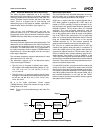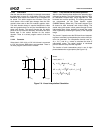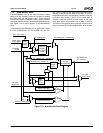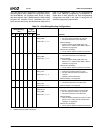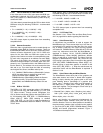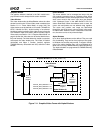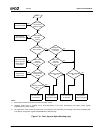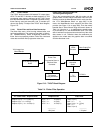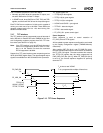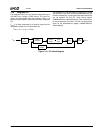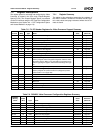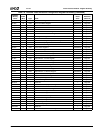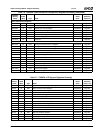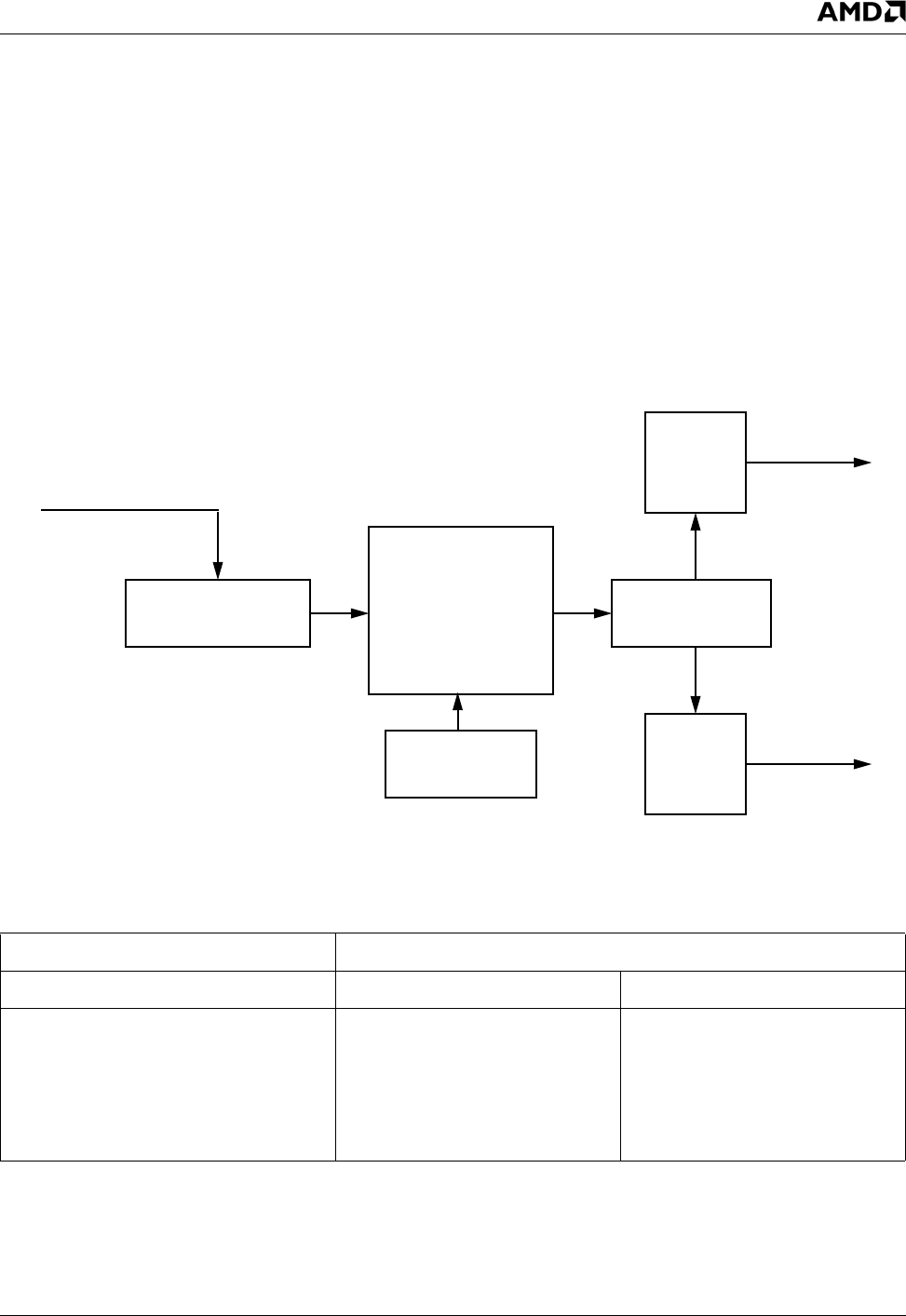
AMD Geode™ SC1200/SC1201 Processor Data Book 329
Video Processor Module
32579B
7.2.4 TVOUT Block
The TVOUT block provides a full-featured TV output signal.
NTSC TV and PAL TV formats are both supported. A YUV
progressive scan image is delivered to the TVOUT block
from the Mixer/Blender block. Integrated horizontal scaling,
flicker filtering, scan rate conversion, and TV encoder pro-
duce a high quality TV output. See TVOUT block diagram,
Figure 7-13.
7.2.4.1 Flicker Filter and Scan Rate Conversion
The flicker filter uses a 3-line moving window buffer, and
has fixed coefficients. The maximum line width is 768 pix-
els. F4BAR0+Memory Offset 814h[30:29] enables the
flicker filter’s two operating modes: Flicker filter interlaced
video data and flicker filter progressive video data.
Flicker Filter, Interlaced Video and
YUV Mixing/Blending Mode
This is the recommended mode. With this mode only the
graphics data is flicker filtered. Interlaced video and YUV
blending must be the Mixer/Blender block’s mode (see Sec-
tion 7.2.3 "Mixer/Blender Block" on page 323). In this
mode, the Mixer/Blender block supports the flicker filter
process (see Figure 7-10 on page 323). Then the mixed/
blended data is flicker filtered using the formula shown in
Table 7-4. Using the ½, 1, ½ coefficients the graphics data
is pre-divided by 2 in the Mixer/Blender block. The video
data is interlaced so the previous and next line of the video
data stream is null. Therefore when the coefficients are
applied to the mixed data, the graphics data is modified
and the video data is not.
Figure 7-13. TVOUT Block Diagram
YUV Image from
Mixer/Blender
3-Line Moving Window
Buffer
Progressive Scan to
Interlace Scan
Converter
Pre-Encoder
Horizontal
TV
Encoder
VESA
Encoder
Video Output Port
TV DACs
TV Encoder
Timing Generator
Flicker Filter
Scaler
Table 7-4. Flicker Filter Operation
Mixer/Blender Block Flicker Filter ½, 1, ½ Coefficients
½ Y Flicker Filter - Graphics Pixel Graphics Pixel Video Pixel
Graphics Y(n-1) * ½ = ½ GY(n-1)
Graphics Y(n) * ½ = ½ GY(n)
Graphics Y(n+1) * ½ = ½ GY(n+1)
½ GY * ½ = ¼ GY(n-1)
½ GY * 1 = ½ GY(n)
½ GY * ½ = ¼ GY(n+1)
----------------
1 GY pixel
Video Y (m-1)
Null * ½ = 0
Video Y (m) * 1= VY(m)
Null * ½ = 0
Video Y (m+1)
--------------
1 VY pixel



